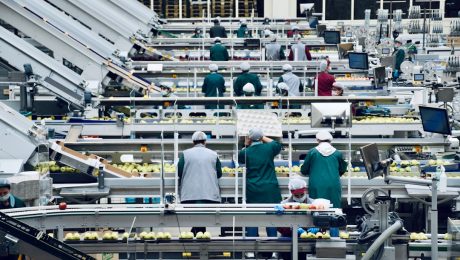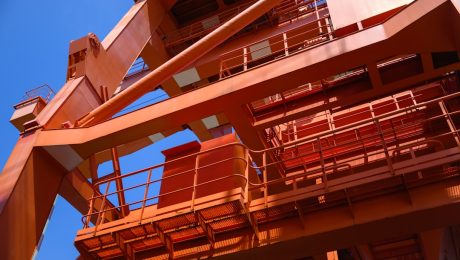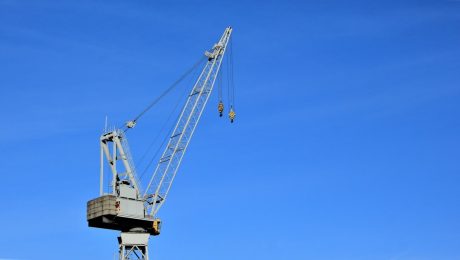User Account Control (UAC) is a crucial security feature in modern Windows operating systems. It’s designed to prevent malicious software and unauthorized changes to your system by requiring administrator privileges for certain actions. Understanding UAC profiles and how to manage them is essential for maintaining a secure computing environment. This comprehensive guide will delve into the intricacies of UAC, exploring its different levels, management techniques, troubleshooting common issues, and best practices for optimal security.
Understanding UAC Levels and Their Implications
UAC operates on a sliding scale of levels, each offering a different balance between security and convenience. The default setting often sits in the middle ground, but you can adjust it to suit your needs and risk tolerance. Let’s examine the key levels:
- Always Notify: This is the most secure setting. UAC prompts you for confirmation *every* time an application attempts to make a system-level change, even if you’re already logged in as an administrator. This offers maximum protection but can be disruptive due to the frequent prompts.
- Notify only when programs try to make changes to my computer: This is the default setting for many Windows installations. It prompts you only when applications attempt to make changes that require administrator privileges. It strikes a balance between security and usability.
- Don’t Notify: This setting disables UAC entirely. While offering the smoothest user experience, it significantly compromises security, making your system vulnerable to malicious software and unauthorized modifications. It’s generally strongly discouraged unless you have a very specific technical reason and understand the risks.
Choosing the right UAC level is a crucial decision. Consider your technical expertise, the sensitivity of the data on your computer, and your tolerance for interruptions when selecting your preferred level.
Managing UAC Profiles and Settings
Managing UAC profiles involves adjusting the notification level and understanding how user accounts interact with the system. You can change your UAC settings through the Control Panel:
- Open the Control Panel.
- Search for “User Account Control” or “UAC”.
- Click “Change User Account Control settings”.
- Use the slider to adjust the notification level.
- Click “OK” to save your changes. You may need to restart your computer for the changes to take full effect.
Beyond the notification level, understanding user account types (Standard vs. Administrator) is vital. Standard accounts have limited privileges, preventing them from making system-wide changes without administrator approval. Administrator accounts have full access and bypass many UAC prompts, but this also increases vulnerability.
Troubleshooting Common UAC Issues
Despite its effectiveness, UAC can sometimes cause issues. Here are some common problems and their solutions:
- Excessive prompts: If you’re receiving too many UAC prompts, try temporarily lowering the UAC level (but remember to raise it back up afterward). This might indicate that a program is attempting to make frequent system changes, possibly due to a bug or malware.
- UAC not working: If UAC seems unresponsive, try restarting your computer. If the problem persists, consider running a system file checker (SFC scan) to repair any corrupted system files. You might also need to check your Group Policy settings if you’re in a managed environment.
- Application compatibility issues: Some older applications may not function correctly with UAC enabled. Try running these applications as administrator (right-click, “Run as administrator”). However, be cautious when doing this with unknown applications.
Security Implications of UAC Profile Choices
The choice of UAC level directly impacts your system’s security. A higher UAC level (like “Always Notify”) provides stronger protection against malicious software and unauthorized changes. Lowering the UAC level weakens this protection, making your system more vulnerable to attacks. Malicious software can exploit vulnerabilities more easily if UAC is disabled or set to a low level.
Consider the potential consequences of each UAC level. While a lower level offers convenience, it comes at the cost of increased security risk. A higher level might be slightly more inconvenient, but it provides a significantly more secure environment.
Best Practices for UAC Management and Security
To maximize the benefits of UAC and maintain a secure system, follow these best practices:
- Keep UAC enabled: Never completely disable UAC unless absolutely necessary and you fully understand the implications.
- Regularly update your software: Outdated software is more susceptible to exploits. Keeping your operating system and applications updated patches vulnerabilities that malicious software could target.
- Use strong passwords: Strong passwords are crucial for protecting your accounts, even with UAC enabled. A compromised administrator account can bypass many UAC protections.
- Be cautious about downloading and installing software: Only download software from trusted sources. Avoid clicking on suspicious links or attachments.
- Use a reputable antivirus and anti-malware program: A good security suite can detect and remove malicious software that might try to bypass UAC.
By understanding and properly managing UAC profiles, you can significantly enhance the security of your Windows system. Remember that a balanced approach, combining a suitable UAC level with other security best practices, offers the best protection.
Tags: UAC, User Account Control, Windows Security, UAC profiles, Windows 10 security
ISO 9001 is more than just a certification; it’s a journey towards operational excellence. This comprehensive guide delves into the practical applications of an ISO 9001 quality management system (QMS), showcasing its transformative power within various organizations. We’ll move beyond theoretical concepts and explore real-world examples of how a robust QMS enhances efficiency, improves customer satisfaction, and drives sustainable growth.
1. Planning and Implementation: Laying the Foundation for Success
Implementing an ISO 9001 QMS begins with meticulous planning. This involves a thorough understanding of the organization’s context, including its internal and external issues, interested parties, and the scope of the QMS. A critical step is defining the quality policy – a high-level statement outlining the organization’s commitment to quality. This policy forms the bedrock for all subsequent activities. The implementation phase itself requires establishing processes, documenting procedures, and assigning responsibilities. Effective communication and training are essential to ensure everyone understands their roles and responsibilities within the QMS. A well-structured implementation plan, incorporating timelines and resource allocation, is crucial for successful deployment.
2. Document Control: The Backbone of a Robust QMS
Effective document control is the cornerstone of a compliant and efficient ISO 9001 system. This involves establishing procedures for creating, reviewing, approving, distributing, and controlling all relevant documents, including procedures, work instructions, and records. Version control is paramount to prevent the use of outdated information. A central document repository, whether physical or digital, ensures easy access and efficient management. Regular audits of document control processes are vital to identify and address any gaps or inconsistencies. A well-managed document control system not only ensures compliance but also streamlines operations and reduces errors, leading to improved efficiency and productivity.
3. Internal Audits: Monitoring and Improving Performance
Internal audits are a crucial component of the ISO 9001 framework. These periodic audits evaluate the effectiveness of the QMS by assessing the conformity of processes and procedures to the established standards. They provide an opportunity to identify areas for improvement, address non-conformances, and ensure the system remains effective. Internal auditors, typically trained personnel within the organization, conduct these audits, documenting their findings and reporting them to management. Corrective actions are implemented to address any identified non-conformances, and preventive actions are taken to prevent similar issues from recurring. The results of internal audits are used to continuously improve the QMS and ensure its ongoing effectiveness.
4. Management Review: Steering the Course towards Excellence
The management review is a high-level process that ensures the QMS remains aligned with organizational goals and objectives. This periodic review, typically conducted by top management, assesses the performance of the QMS, considering various performance indicators, internal audit results, customer feedback, and other relevant data. The management review provides an opportunity to identify opportunities for improvement, update the quality policy, and allocate resources effectively. The outcomes of the management review are documented and used to guide strategic decisions related to the QMS, ensuring its continued effectiveness and alignment with the organization’s overall strategic direction. This proactive approach ensures the system remains relevant and adaptable to changing business needs.
5. Continuous Improvement: The Engine of Long-Term Success
Continuous improvement is not just a component of ISO 9001; it’s the driving force behind its success. The Plan-Do-Check-Act (PDCA) cycle is a fundamental tool for driving continuous improvement. This iterative process involves planning changes, implementing them, checking their effectiveness, and acting on the results. Data analysis plays a vital role in identifying areas needing improvement. Customer feedback, internal audit findings, and performance indicators provide valuable insights into areas where the QMS can be enhanced. By embracing a culture of continuous improvement, organizations can continuously refine their processes, enhance efficiency, and deliver consistently high-quality products and services. This ongoing commitment to improvement is key to maintaining ISO 9001 certification and achieving sustainable business excellence.
Implementing an ISO 9001 QMS is a journey, not a destination. It requires commitment, dedication, and a willingness to embrace continuous improvement. However, the rewards are substantial: enhanced efficiency, improved customer satisfaction, increased profitability, and a stronger competitive advantage. By understanding and applying the principles outlined above, organizations can unlock the full potential of their ISO 9001 quality management system and drive sustainable growth.
SEO-Friendly Tags:
- ISO 9001
- Quality Management System
- QMS Implementation
- Continuous Improvement
- ISO 9001 Certification
body {
font-family: sans-serif;
line-height: 1.6;
}
h1, h2, h3 {
color: #333;
}
The steel industry, a cornerstone of global infrastructure and manufacturing, faces a monumental challenge: decarbonization. With steel production accounting for a significant portion of global greenhouse gas emissions, achieving net-zero targets is crucial for mitigating climate change. This post delves into the complexities of this transition, exploring the hurdles, innovative solutions, and the path towards a sustainable future for steelmaking.
The Carbon Footprint of Steel: Understanding the Challenge
Steel production is inherently energy-intensive and carbon-heavy. The traditional blast furnace-basic oxygen furnace (BF-BOF) route, still dominant globally, relies heavily on coking coal, a significant source of CO2 emissions. The process involves several stages: iron ore reduction using coke, smelting in a blast furnace, and refining in a basic oxygen furnace. Each stage releases substantial greenhouse gases. Beyond CO2, other emissions like methane and nitrous oxide contribute to the industry’s overall carbon footprint. Quantifying this footprint accurately is crucial for setting realistic net-zero targets and monitoring progress. Life cycle assessments (LCAs) are increasingly employed to comprehensively evaluate emissions throughout the steel’s entire production chain, from raw material extraction to end-of-life recycling.
Technological Innovations: Paving the Way to Net-Zero Steel
The pursuit of net-zero steel hinges on technological breakthroughs that drastically reduce or eliminate carbon emissions. Several promising technologies are emerging:
- Hydrogen-based Direct Reduction: Replacing coking coal with hydrogen in the iron ore reduction process significantly reduces CO2 emissions. However, producing green hydrogen (via renewable energy sources like solar or wind) is crucial for achieving true decarbonization. Challenges include the scalability of green hydrogen production and the cost-effectiveness of the technology.
- Electric Arc Furnaces (EAFs): EAFs utilize electricity to melt scrap steel, a significantly cleaner process compared to blast furnaces. Increasing the share of scrap steel in steelmaking is vital, requiring robust recycling infrastructure and efficient scrap collection systems.
- Carbon Capture, Utilization, and Storage (CCUS): CCUS technologies capture CO2 emissions from steel plants and either store them underground or utilize them in other industrial processes. While promising, CCUS faces challenges related to energy consumption, cost, and potential leakage from storage sites.
- Bio-based Carbon Sources: Research is exploring the use of biogenic carbon sources, like biomass, as a more sustainable alternative to fossil fuels in steelmaking. However, ensuring the sustainability and scalability of biomass production remains a critical aspect.
Policy and Regulatory Frameworks: Driving the Transition
Government policies and regulations play a crucial role in accelerating the transition to net-zero steel. Carbon pricing mechanisms, such as carbon taxes or emissions trading schemes, can incentivize steelmakers to invest in cleaner technologies. Furthermore, supportive policies promoting renewable energy development, hydrogen production, and research and development in low-carbon steelmaking are essential. Stringent emission standards and regulations can also drive innovation and accelerate the adoption of cleaner technologies. International collaborations are vital for establishing consistent standards and fostering technology transfer across countries.
The Role of Supply Chains and Collaboration: A Holistic Approach
Achieving net-zero emissions in steel production requires a holistic approach that extends beyond individual steel plants. Collaboration across the entire steel supply chain is paramount. This includes working with raw material suppliers to reduce emissions in mining and transportation, collaborating with downstream industries to improve the recyclability of steel products, and engaging with consumers to promote sustainable consumption patterns. Developing standardized methods for measuring and reporting emissions throughout the supply chain will be crucial for transparency and accountability.
The Future of Net-Zero Steel: Challenges and Opportunities
The transition to net-zero steel presents both significant challenges and immense opportunities. Challenges include the high capital costs associated with new technologies, the need for large-scale infrastructure development (e.g., renewable energy and hydrogen pipelines), and the potential for job displacement in traditional steelmaking regions. However, the opportunities are equally substantial: a greener steel industry can create new jobs in the renewable energy sector, enhance energy security, and drive innovation in materials science and engineering. Furthermore, achieving net-zero emissions will contribute significantly to global climate goals, securing a more sustainable future for generations to come. Investing in research and development, fostering public-private partnerships, and implementing effective policies are crucial for navigating these challenges and realizing the opportunities inherent in this transformative journey.
The path to net-zero steel is complex and demanding, but it is a journey we must undertake. By embracing technological innovation, collaborating across industries, and implementing supportive policies, we can forge a greener future for steel production and contribute significantly to global climate action.
Winter’s harsh conditions can wreak havoc on outdoor structures and equipment. Freezing temperatures, ice, snow, and de-icing salts create a corrosive environment that accelerates the deterioration of many materials. However, galvanized products stand strong against these challenges, offering superior performance and longevity in even the coldest climates. This comprehensive guide explores the remarkable resilience of galvanized steel in cold weather and explains why it’s the preferred choice for numerous applications.
Understanding the Galvanization Process and its Cold-Weather Benefits
Galvanization is a process of applying a protective zinc coating to steel. This zinc layer acts as a sacrificial anode, meaning it corrodes preferentially to the underlying steel. In cold climates, this protective mechanism is particularly crucial. The zinc coating prevents moisture and corrosive elements from reaching the steel, safeguarding it from rust and degradation even when exposed to freezing temperatures, ice, and snow. The zinc coating itself is also remarkably resistant to the embrittlement that can affect other metals in sub-zero temperatures, maintaining its structural integrity and protective qualities.
Corrosion Resistance: The Key to Long-Term Performance in Cold Climates
Corrosion is the biggest enemy of steel in cold environments. De-icing salts, prevalent in many regions during winter, are highly corrosive. These salts accelerate the rusting process, leading to rapid deterioration of unprotected steel. Galvanized steel, however, provides exceptional corrosion resistance. The zinc coating acts as a barrier, preventing the salts and moisture from contacting the steel substrate. Even if some minor scratches or imperfections occur in the zinc coating, the self-healing properties of zinc help to prevent further corrosion. This self-healing action is particularly important in cold climates where repairs may be delayed due to inclement weather.
Durability and Longevity: Withstanding the Test of Time and Temperature
The durability of galvanized products extends far beyond their corrosion resistance. The zinc coating enhances the overall strength and toughness of the steel, making it less susceptible to damage from impacts, abrasion, and stress. In cold climates, where materials are subjected to repeated cycles of freezing and thawing, this enhanced durability is essential. The expansion and contraction of materials during these cycles can cause stress cracking and weakening. However, the robust nature of galvanized steel, combined with the protective zinc layer, minimizes these effects, ensuring long-term structural integrity and extending the lifespan of the product significantly.
Specific Applications of Galvanized Products in Cold Climates
Galvanized steel’s resilience makes it ideal for a wide range of applications in cold climates. Common examples include:
- Roofing and siding: Galvanized steel roofing and siding provide excellent protection against snow, ice, and the corrosive effects of de-icing salts. Their durability ensures long-lasting performance, reducing the need for frequent repairs or replacements.
- Highway guardrails and fencing: Exposed to the harshest winter elements, galvanized steel guardrails and fencing maintain their structural integrity and safety even under extreme conditions. The corrosion resistance prevents weakening and ensures long-term safety.
- Bridges and other infrastructure: Galvanized steel is a crucial component in the construction of bridges and other infrastructure projects in cold climates. Its durability and resistance to corrosion are vital for ensuring the longevity and safety of these essential structures.
- Agricultural structures: From barns and silos to livestock fencing, galvanized steel provides robust and long-lasting protection for agricultural equipment and structures in cold and snowy environments.
Maintenance and Considerations for Galvanized Products in Cold Climates
While galvanized steel is highly durable, proper maintenance can further enhance its performance in cold climates. Regular inspections for any signs of damage to the zinc coating are recommended. Minor scratches or abrasions can be touched up with zinc-rich paint to maintain the protective layer. It’s also important to avoid using abrasive cleaning methods that could damage the zinc coating. In areas with heavy snowfall, regular snow removal from roofs and other structures made of galvanized steel is crucial to prevent build-up and potential damage from excessive weight.
In conclusion, galvanized products offer unparalleled performance in cold climates. Their superior corrosion resistance, durability, and longevity make them the ideal choice for a vast array of applications, ensuring safety, reliability, and long-term cost savings in even the most challenging winter conditions.
SEO Tags: Galvanized steel, cold climate, corrosion resistance, winter durability, galvanized products, zinc coating
The steel industry, a cornerstone of global infrastructure, has historically been a significant contributor to greenhouse gas emissions. However, a green steel revolution is underway, driven by necessity and innovation. This post delves into the exciting advancements shaping a more sustainable future for steel manufacturing.
1. Minimizing Carbon Emissions: The Heart of Green Steel
The primary focus of eco-friendly steel manufacturing is drastically reducing carbon emissions. Traditional blast furnace-based steelmaking relies heavily on coking coal, a major source of CO2. Several strategies are being employed to mitigate this:
- Hydrogen-based steelmaking: Replacing coking coal with hydrogen as a reducing agent in the steelmaking process eliminates direct CO2 emissions. While still under development, hydrogen steelmaking is considered a crucial pathway to decarbonization. Challenges include the cost and availability of green hydrogen (produced using renewable energy).
- Electric Arc Furnaces (EAFs): EAFs utilize electricity to melt scrap steel, significantly reducing reliance on virgin iron ore and coking coal. This process is already established and considerably cleaner than blast furnaces, making it a vital component of green steel production. Increasing the proportion of scrap steel used is key to maximizing the environmental benefits.
- Carbon Capture, Utilization, and Storage (CCUS): CCUS technologies capture CO2 emissions from steel plants and either utilize them in other industrial processes or store them underground. While effective, CCUS is currently expensive and requires significant infrastructure investment.
- Process optimization and energy efficiency: Improving the energy efficiency of steelmaking processes through technological advancements and optimized operations can also significantly reduce the overall carbon footprint.
2. The Crucial Role of Steel Recycling in Green Steel Production
Recycling steel is a cornerstone of sustainable steel production. Scrap steel can be readily used in EAFs, significantly reducing the need for new iron ore and coking coal. This closed-loop system minimizes environmental impact by:
- Conserving natural resources: Recycling steel saves vast amounts of iron ore, reducing the environmental burden of mining and processing.
- Lowering energy consumption: Melting scrap steel requires considerably less energy than producing steel from raw materials.
- Reducing greenhouse gas emissions: By substituting virgin materials, recycling drastically reduces the carbon footprint of steel production.
- Improving waste management: Recycling steel diverts scrap metal from landfills, promoting a circular economy.
Efforts to improve scrap steel collection and sorting are crucial to maximizing the efficiency and effectiveness of steel recycling.
3. Renewable Energy Integration: Powering a Sustainable Steel Industry
The electricity used in steelmaking, particularly in EAFs, significantly impacts the overall environmental footprint. Transitioning to renewable energy sources for powering steel plants is paramount. This involves:
- On-site renewable energy generation: Steel plants can integrate solar, wind, or hydropower to generate a portion of their electricity needs, reducing reliance on fossil fuel-based power grids.
- Power Purchase Agreements (PPAs): Purchasing renewable energy from external sources through PPAs ensures a clean energy supply for steel production.
- Grid modernization: Investments in modernizing electricity grids are essential to handle the fluctuating nature of renewable energy sources and ensure a reliable power supply for steel plants.
4. Technological Advancements: Driving Innovation in Green Steel
Continuous research and development are crucial for further advancements in green steel manufacturing. Emerging technologies include:
- Artificial Intelligence (AI) and machine learning: AI can optimize steelmaking processes, improving energy efficiency and reducing waste.
- Advanced materials and alloys: Developing new steel alloys with improved properties can reduce the amount of steel needed for specific applications, ultimately lowering the overall environmental impact.
- Improved process control and monitoring: Advanced sensors and monitoring systems can enhance the efficiency and sustainability of steelmaking processes.
5. Collaboration and Policy Support: The Path to a Sustainable Steel Future
Achieving a truly sustainable steel industry requires collaboration across the value chain, from raw material suppliers to end-users. Government policies and regulations also play a vital role:
- Carbon pricing mechanisms: Implementing carbon taxes or cap-and-trade systems can incentivize steel manufacturers to reduce their emissions.
- Government subsidies and incentives: Financial support for research and development, deployment of green technologies, and infrastructure development can accelerate the transition to green steel.
- Industry partnerships and collaborations: Collaboration between steel manufacturers, researchers, and policymakers is essential for sharing knowledge and resources to drive innovation and accelerate the adoption of sustainable practices.
- Consumer awareness and demand for sustainable products: Increased consumer demand for sustainably produced steel can drive market forces towards greener practices.
The transition to eco-friendly steel manufacturing is a complex but crucial undertaking. By combining technological innovation, policy support, and industry collaboration, we can forge a sustainable future for this vital industry.
Tags: green steel, sustainable steel, eco-friendly steel, steel recycling, carbon neutral steel
The number 500. It’s a seemingly ordinary number, a halfway point between zero and a thousand. Yet, beneath its unassuming surface lies a rich tapestry of mathematical properties, historical significance, and cultural interpretations. This exploration delves into the multifaceted nature of 500, revealing its hidden meanings and surprising connections.
500 in Mathematics: Properties and Significance
Mathematically, 500 is a composite number, meaning it has more than two factors (1, 2, 4, 5, 10, 20, 25, 50, 100, 125, 250, 500). It’s divisible by 2 and 5, making it an even number and a multiple of 100. Its prime factorization is 22 x 53. In various mathematical contexts, 500 can serve as a benchmark, a midpoint, or a significant round number in estimations and calculations. Consider its role in statistical analysis, where 500 samples might be considered a reasonable size for certain studies. Its divisibility by several numbers makes it useful in problems involving fractions and proportions. The number also plays a role in certain mathematical series and sequences.
500 in History: From Ancient Civilizations to Modern Times
The historical significance of 500 varies across different cultures and time periods. In ancient Rome, the number held less prominent symbolic meaning compared to other numbers like 100 or 1000. However, the use of 500 (quinti) as a numeral in Roman numerals (D) demonstrates its practical application in record-keeping and administration. In various historical contexts, the number may have been associated with specific events or milestones. For instance, the year 500 AD marked a significant transition point in history, representing the midpoint of the first millennium. The number also appears in historical records related to population counts, monetary values, and measurements. Analyzing historical documents for occurrences of 500 can provide insights into past societies and their practices.
500 in Culture: Symbolism and Interpretations
Cultural interpretations of 500 are diverse and often subjective. Some cultures might associate it with specific deities, events, or beliefs. In numerology, the number 500 is often associated with the number 5, which is linked to freedom, change, and adaptability. Combining this with the influence of the number zero (representing wholeness or completion), and the number 1 (representing new beginnings), a numerological interpretation of 500 might suggest a period of significant transformation and new beginnings after a cycle has completed. However, these are subjective interpretations and not universally accepted.
500 in Popular Culture: Movies, Books, and Games
The number 500 has made its mark on popular culture in various forms. From movie titles (like “500 Days of Summer”) to video game scores and literary references, its presence is subtle yet noticeable. The film “500 Days of Summer,” for instance, uses the number not just as a title but as a narrative device, structuring the story around non-linear timelines. In video games, reaching a score of 500 or achieving a level 500 might represent a significant accomplishment. The use of 500 in popular culture reflects its ability to serve as a memorable and easily recognizable number, often used to create a sense of scale or achievement.
500 Today: Its Relevance in Modern Society
In modern society, 500 maintains its relevance in various contexts. In finance, 500 dollars or euros represents a significant sum, often used as a benchmark in budgeting and financial planning. In business, 500 employees might represent a medium-sized company. In science, 500 samples might be a sufficient number for a statistical study. The number continues to play a practical role in everyday life, representing quantities, measurements, and benchmarks across numerous fields. Its persistence in various sectors highlights its enduring relevance in quantifying and understanding aspects of our world.
In conclusion, the number 500, while seemingly simple, possesses a depth of meaning and significance that extends beyond its mathematical definition. Its historical presence, cultural interpretations, and continued relevance in modern society showcase its multifaceted nature and enduring impact.
Tags: 500, number 500, significance of 500, history of 500, cultural significance of numbers
body {
font-family: sans-serif;
line-height: 1.6;
margin: 20px;
}
h1, h2 {
color: #333;
}
h1 {
font-size: 2.5em;
}
h2 {
font-size: 1.8em;
margin-top: 2em;
}
p {
margin-bottom: 1em;
}
strong {
font-weight: bold;
}
Structural steel has been a cornerstone of modern construction for over a century. Its enduring popularity stems from a unique combination of properties that make it a superior choice for a wide range of projects, from skyscrapers to bridges to industrial facilities. This comprehensive guide explores the multifaceted benefits of structural steel, illuminating why it remains a preferred material for engineers and architects worldwide.
Unmatched Strength and Durability: The Foundation of Steel’s Success
The most immediately apparent advantage of structural steel is its exceptional strength-to-weight ratio. Steel possesses a high tensile strength, meaning it can withstand significant pulling forces without breaking. This allows for the creation of slender, yet robust, structures that can support immense loads. Furthermore, steel’s inherent durability ensures longevity. Properly designed and maintained steel structures can withstand harsh weather conditions, seismic activity, and the test of time, minimizing the need for frequent repairs and replacements. Unlike some materials prone to degradation, steel’s resistance to rot, decay, and insect infestation contributes to its long-term cost-effectiveness. Modern protective coatings further enhance its resistance to corrosion, extending its lifespan even further.
Versatility in Design and Architectural Freedom: Shaping the Modern Landscape
Structural steel’s versatility is a key factor in its widespread adoption. Its malleability allows for complex and intricate designs, pushing the boundaries of architectural creativity. Unlike materials with inherent limitations in shape and form, steel can be easily shaped, bent, and welded to create a wide array of structural elements – beams, columns, trusses, and more. This flexibility allows architects and engineers to realize bold and innovative designs that would be impossible with other materials. This versatility extends to the integration of other materials, seamlessly combining steel with concrete, glass, and wood to create aesthetically pleasing and functional structures.
Sustainability and Environmental Considerations: A Greener Choice Than You Might Think
While often overlooked, structural steel boasts significant sustainability advantages. Steel is a highly recyclable material, with a recycling rate exceeding 90% in many developed countries. This reduces the demand for virgin materials, conserving natural resources and minimizing environmental impact. Furthermore, steel production processes are constantly evolving to become more efficient and environmentally friendly, reducing carbon emissions and energy consumption. The durability of steel structures also contributes to sustainability, as they require less frequent replacement than other materials, reducing the embodied carbon throughout their lifecycle. The use of recycled steel in construction further minimizes the environmental footprint of the project.
Cost-Effectiveness and Faster Construction: Saving Time and Money
Despite its premium strength and quality, structural steel often proves to be a cost-effective solution in the long run. Its high strength-to-weight ratio allows for the use of less material compared to other materials like reinforced concrete, leading to potential savings in material costs. Furthermore, the prefabrication capabilities of steel significantly reduce construction time. Components can be manufactured off-site and assembled quickly on-site, leading to faster project completion and reduced labor costs. This accelerated construction schedule translates to faster return on investment for developers and owners.
Safety and Reliability: Ensuring Structural Integrity and Peace of Mind
The safety and reliability of structural steel are paramount. Its predictable behavior under load makes it highly suitable for critical applications where structural integrity is crucial. Steel’s strength and resilience allow it to withstand unexpected events such as earthquakes and strong winds, providing a safer environment for occupants. Stringent quality control measures throughout the manufacturing and construction process ensure the high quality and consistency of the material, further contributing to the safety and reliability of the final structure. Regular inspections and maintenance can further enhance the longevity and safety of steel structures.
In conclusion, the benefits of structural steel are numerous and compelling. From its exceptional strength and durability to its versatility, sustainability, cost-effectiveness, and inherent safety, it remains a leading choice for a diverse range of construction projects. Its contribution to modern architecture and infrastructure is undeniable, and its continued evolution promises even greater advancements in the years to come.
SEO-Friendly Tags:
- Structural Steel
- Steel Construction
- Steel Building Benefits
- Advantages of Structural Steel
- Sustainable Steel Construction
Offering a wide product range can be a double-edged sword. While it presents significant opportunities for growth and customer acquisition, it also introduces complexities in inventory management, marketing, and overall business strategy. This comprehensive guide delves into the intricacies of managing a diverse product portfolio, helping you harness its potential while mitigating potential pitfalls.
1. The Allure of Diversification: Why a Wide Product Range Can Be Advantageous
A broad product range offers several compelling advantages. Firstly, it allows you to cater to a wider customer base. By offering diverse products, you increase the likelihood of attracting and retaining customers with varied needs and preferences. This diversification reduces reliance on a single product or market segment, making your business more resilient to fluctuations in demand. Secondly, a diverse product line can enhance your brand image. A wide selection suggests expertise and a comprehensive understanding of your industry, building trust and credibility with potential customers. Thirdly, it opens doors to increased revenue streams. While managing a larger inventory might seem daunting, the potential for higher sales volume and improved profitability is significant. Finally, a diverse product portfolio can also serve as a powerful marketing tool, allowing you to cross-promote products and create bundled offers to boost sales.
2. Strategic Segmentation: Targeting Diverse Customer Groups
Effectively managing a wide product range requires a strategic approach to customer segmentation. Understanding your target audience is crucial. Instead of treating all customers as a homogenous group, segment your market based on demographics, psychographics, buying behavior, and other relevant factors. This allows you to tailor your marketing efforts and product offerings to specific customer segments. For example, you might offer premium products to high-income earners while providing budget-friendly options for price-sensitive consumers. Effective segmentation ensures that your marketing messages resonate with individual groups, maximizing the impact of your campaigns and optimizing your return on investment.
3. Inventory Management: The Backbone of a Successful Wide Product Range
Efficient inventory management is paramount when dealing with a diverse product portfolio. Implementing a robust inventory management system is essential to track stock levels, predict demand, and optimize ordering processes. Utilizing technology, such as inventory management software, can streamline operations, reducing the risk of stockouts and overstocking. Effective forecasting, based on historical data and market trends, is crucial for minimizing storage costs and preventing obsolescence. Regular inventory audits and cycle counting help maintain accuracy and identify potential discrepancies. Furthermore, consider implementing a just-in-time (JIT) inventory system to minimize storage costs and reduce the risk of holding obsolete inventory.
4. Marketing and Promotion: Showcasing Your Diverse Offerings
Marketing a wide product range requires a multi-faceted approach. Simply listing all your products won’t suffice; you need a strategic plan to highlight key features and benefits. Consider using different marketing channels to reach diverse customer segments. This could involve a mix of online marketing (SEO, social media, email marketing, paid advertising), offline marketing (print advertising, events, public relations), and a strong omnichannel strategy that integrates all channels seamlessly. Product categorization and effective website navigation are crucial for customers to easily find what they’re looking for. High-quality product photography and detailed descriptions are also essential to showcase your offerings effectively. Furthermore, consider creating targeted marketing campaigns based on your customer segments, ensuring that your message resonates with each group.
5. Overcoming Challenges: Addressing the Complexities of a Wide Product Range
Managing a wide product range presents several challenges. One significant hurdle is the increased complexity of inventory management. Tracking stock levels, managing orders, and preventing stockouts become more demanding with a larger inventory. Another challenge lies in marketing and promotion. Effectively showcasing a diverse product portfolio without overwhelming customers requires careful planning and execution. Maintaining consistent quality across all products is also crucial for brand reputation. Finally, managing costs, including storage, shipping, and marketing expenses, can become more challenging with a larger inventory. Addressing these challenges requires careful planning, efficient systems, and a dedicated team to manage the complexities of a diverse product line. Regular review and adaptation of your strategies are essential to ensure ongoing success.
By carefully considering these aspects and implementing effective strategies, businesses can successfully navigate the complexities of a wide product range and leverage its potential for significant growth and profitability.
SEO Tags:
- Wide Product Range
- Diverse Inventory Management
- Product Diversification Strategy
- Customer Segmentation Marketing
- Omnichannel Product Strategy
High-strength steel (HEA) profiles are increasingly vital in modern construction, offering exceptional strength-to-weight ratios for heavy load structures. This comprehensive guide delves into the critical aspects of utilizing HEA profiles, ensuring a thorough understanding of their capabilities and limitations.
Understanding High-Strength Steel (HEA) and its Properties
HEA profiles, often referred to as high yield strength steel sections, are designed using advanced steel grades boasting significantly higher yield strengths compared to conventional structural steel. This superior strength allows for lighter sections to be used while maintaining or exceeding the load-bearing capacity of traditional designs. Key properties influencing their selection include:
- Yield Strength: A crucial parameter determining the load-carrying capacity before permanent deformation occurs. HEA steels exhibit yield strengths substantially higher than those of standard grades (e.g., S275, S355).
- Tensile Strength: Represents the maximum stress a material can withstand before fracturing. While important, yield strength is typically the primary design consideration.
- Ductility: The ability of the steel to deform plastically before fracture. A balance is needed; sufficient ductility ensures toughness and prevents brittle failure, while excessive ductility might compromise strength.
- Weldability: HEA steels often require specialized welding procedures to ensure sound welds and avoid potential issues like cracking. Pre-qualification of welding processes is essential.
- Fatigue Resistance: The ability to withstand repeated loading cycles without failure. This is crucial for structures subjected to dynamic loads.
Design Considerations for HEA Profiles in Heavy Load Structures
Designing with HEA profiles requires careful consideration of several factors to optimize performance and safety. These include:
- Structural Analysis: Accurate finite element analysis (FEA) is crucial to predict stress distributions and ensure the structure can withstand anticipated loads. The higher strength of HEA steel requires precise modeling to capture its behavior accurately.
- Connection Design: Connections are critical in transferring loads effectively. The higher strength of HEA steel may necessitate stronger and more robust connections, potentially requiring specialized fasteners or welding techniques.
- Buckling Considerations: Slender HEA sections are susceptible to buckling under compressive loads. Careful design is essential to prevent this, potentially involving bracing or employing sections with higher stiffness.
- Stability Analysis: Global and local stability checks are vital, particularly for tall or slender structures. Second-order effects, where deformations influence load distribution, must be considered.
- Fabrication and Erection: The higher strength of HEA steel might make it more challenging to fabricate and erect. Specialized equipment and skilled labor may be required.
Applications of HEA Profiles in Heavy Load Structures
The unique properties of HEA profiles make them ideal for various heavy load applications, including:
- Bridges: HEA steel allows for lighter and more efficient bridge designs, reducing material costs and improving aesthetics.
- High-Rise Buildings: In high-rise construction, HEA sections contribute to reduced structural weight, leading to smaller foundations and lower construction costs.
- Offshore Structures: The strength and corrosion resistance of certain HEA steels make them suitable for harsh marine environments.
- Industrial Structures: Heavy industrial facilities, such as factories and warehouses, benefit from the increased load-bearing capacity of HEA profiles.
- Crane Structures: The high strength-to-weight ratio is essential for crane designs, improving efficiency and reducing material consumption.
Advantages and Disadvantages of Using HEA Profiles
While HEA profiles offer significant advantages, it’s crucial to acknowledge their limitations:
Advantages:
- Increased Strength-to-Weight Ratio: This leads to lighter structures, reduced material costs, and improved efficiency.
- Reduced Structural Size: Smaller sections can be used, potentially leading to improved aesthetics and reduced space requirements.
- Improved Load-Bearing Capacity: HEA profiles can handle significantly higher loads compared to conventional steel sections.
Disadvantages:
- Higher Initial Cost: HEA steel is typically more expensive than standard grades.
- Specialized Fabrication Techniques: Welding and other fabrication processes require specialized expertise and equipment.
- Potential for Brittle Fracture: Careful consideration of ductility and toughness is essential to prevent brittle failure.
- Increased Complexity in Design: The design process requires advanced analysis techniques and expertise.
Selecting the Appropriate HEA Profile for Your Project
The selection of the appropriate HEA profile depends on various factors, including the intended application, load requirements, environmental conditions, and budget constraints. Close collaboration between structural engineers, fabricators, and material suppliers is crucial for successful project implementation. Detailed analysis, considering all relevant design codes and standards, is paramount to ensure safety and performance.
Careful consideration of the material properties, section geometry, connection design, and fabrication methods ensures optimal performance and longevity of the structure. Ignoring any of these aspects can compromise structural integrity and lead to potential failures.
This detailed understanding of HEA profiles is crucial for engineers and designers involved in heavy load structures. By carefully considering the factors outlined above, you can harness the superior capabilities of HEA steel to create efficient, robust, and safe structures.
Net terms, also known as payment terms, are a critical aspect of business-to-business (B2B) transactions. Understanding these terms is essential for managing cash flow, building strong supplier relationships, and ensuring the financial health of your company. This comprehensive guide will delve into the intricacies of net terms, helping you navigate the complexities and optimize your payment strategies.
Decoding Net 30, Net 60, and Other Net Payment Terms
The most common net terms you’ll encounter are expressed as “Net 30,” “Net 60,” or similar notations. These numbers represent the number of days a buyer has to pay an invoice from the invoice date. “Net 30” means the payment is due 30 days after the invoice date. “Net 60” signifies a 60-day payment period. Other variations exist, such as Net 15, Net 45, or even longer periods, depending on the agreement between the buyer and seller. Understanding these terms is crucial for accurately predicting cash inflows and outflows.
The Impact of Net Terms on Cash Flow Management
Net terms directly impact your business’s cash flow. Offering Net 60 terms to your customers means you won’t receive payment for 60 days after the sale. This can create a significant lag between revenue generation and actual cash in hand. Conversely, if you’re a buyer operating under Net 30 terms, you have 30 days to pay your suppliers, allowing you to manage your cash flow more effectively. Effective cash flow management requires careful consideration of the net terms offered to customers and accepted from suppliers. This often involves balancing the need to offer competitive terms to attract customers with the need to maintain sufficient cash reserves to meet operational expenses.
Negotiating Favorable Net Terms: A Strategic Approach
Negotiating net terms is a crucial skill for businesses of all sizes. Smaller businesses often need to offer more lenient terms (e.g., Net 60) to compete with larger companies. However, extending longer payment periods can strain your cash flow. Conversely, larger, more established businesses can often negotiate shorter payment terms (e.g., Net 15) from suppliers, improving their cash flow position. Successful negotiation involves understanding your own financial position, the creditworthiness of your customers or suppliers, and the prevailing industry standards. Building strong relationships and demonstrating financial stability are key to securing favorable terms.
Mitigating Risks Associated with Extended Net Terms
Offering extended net terms increases the risk of late payments or even non-payment. To mitigate this risk, businesses should thoroughly vet their customers’ creditworthiness before extending credit. This involves checking credit reports, assessing their payment history, and understanding their financial stability. Furthermore, implementing robust invoicing and collections processes is vital. This includes sending timely invoices, following up on overdue payments promptly, and considering using collection agencies as a last resort. For larger transactions, requiring a down payment or securing a letter of credit can further reduce risk.
Exploring Invoice Financing and Other Funding Options
If your business faces cash flow challenges due to extended net terms, several financing options can help. Invoice financing, also known as accounts receivable financing, allows you to access immediate capital based on your outstanding invoices. This can bridge the gap between issuing invoices and receiving payment, providing much-needed liquidity. Other options include lines of credit, term loans, and factoring. Choosing the right financing option depends on your specific needs, risk tolerance, and financial situation. It’s crucial to carefully compare different financing options and understand their associated costs and terms before making a decision.
Understanding and effectively managing net terms is paramount for the financial health of any business. By strategically negotiating terms, mitigating risks, and exploring available financing options, businesses can optimize their cash flow and ensure sustainable growth.
SEO-Friendly Tags:
- Net Terms
- Payment Terms
- Net 30
- Net 60
- Invoice Financing










